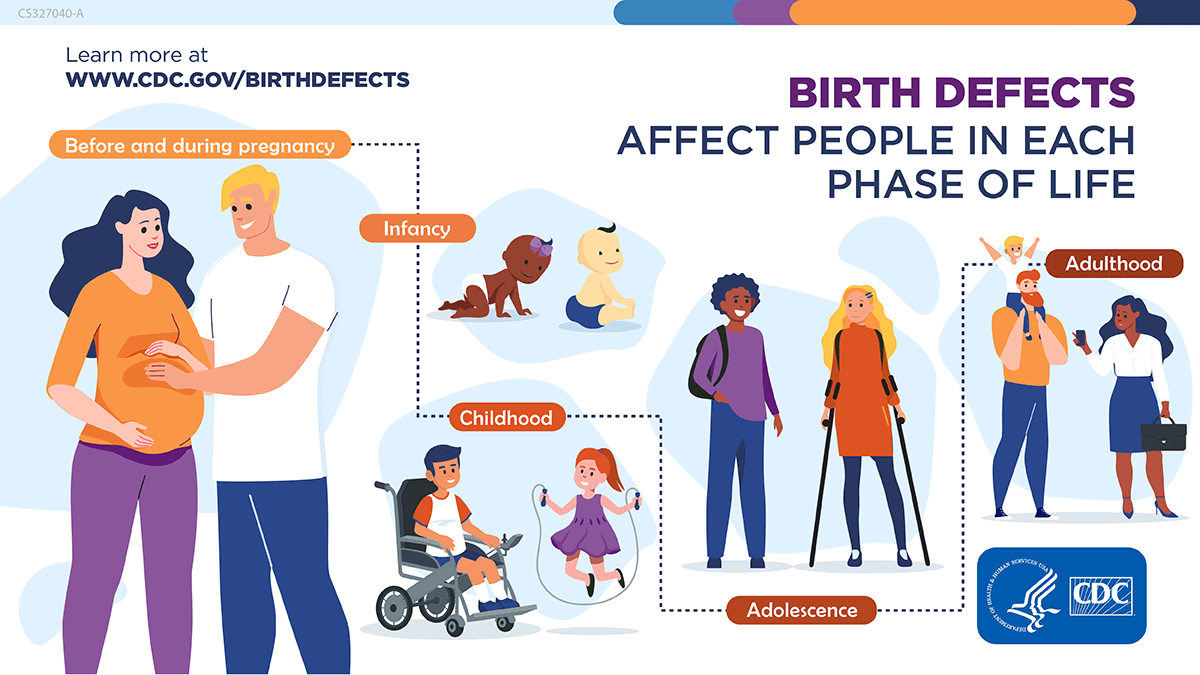Utah Birth Defect Network
Office of Children with Special Health Care Needs
Utah Birth Defect Network:
The Utah Birth Defect Network (UBDN) is a statewide, population-based surveillance system that seeks to prevent birth defects and secondary disabilities by monitoring occurrence, referring to services, facilitating research, and providing education and outreach. The UBDN is operated under the Utah Department of Health, Division of Family Health and Preparedness, Office of Children with Special Health Care Needs.
The Utah Birth Defect Network (UBDN) began in 1994 by monitoring neural tube defects. Additional birth defects were added in 1995 and again in 1997. With additional funding from Center for Disease Control and Prevention (CDC), the Birth Defect Network began monitoring all major birth defects in 1999.
Activities of the Birth Defect Network:
- Monitor the occurrence of birth defects in Utah
- Assess trends over time
- Address community concerns
- Examine clustering of birth defects
- Quantify morbidity and mortality
- Health services planning
- Referral for services
- Monitor intervention strategies
- Secondary prevention
- Consumer education and advocacy
- Health care provider education
Public Health Importance
Every 4.5 minutes, a baby is born with a birth defect. Major birth defects are conditions present at birth that cause structural changes in one or more parts of the body. They can have a serious, adverse effect on health, development, or functional ability. The possible association between environmental contaminants and human health problems is an important concern throughout Utah.
- In 2019, more than 800 infants were born with major structural or genetic birth defects in Utah.
- In the U.S., one in 33 babies is born with a birth defect affecting about 120,000 babies each year.
- Birth defects are one of the leading causes of death in children less than one year of age - causing one in every five deaths.
- Effects of birth defects can range from mild to severe and can result in debilitating illness, long-term disability or death.
- Defects of the heart are the most common kind of birth defect and cause most of the hospitalizations.
- During 2019, hospital costs in the U.S. for birth defects totaled $22.2 billion dollars and accounted for more than 937,000 hospitalizations.
- Causes of most birth defects are unknown.
- Utahans are concerned about the possible association between birth defects and environmental contamination.
Why does the Utah Birth Defect Network (UBDN) monitor birth defects in Utah?
- 79.5% of birth defect cases in Utah from 1999-2003 have no known cause.
- 1 in 4 infant deaths in Utah is attributable to birth defects.
- 1 in 56 births in Utah is affected by a birth defect tracked by the UBDN.
Tracking and studying birth defects in Utah provides the information needed to monitor the burden of disease locally and statewide, to assess services, to allocate resources for optimal care, and to evaluate prevention efforts.
Which birth defects does the UBDN track?
- All major structural birth defects
- Some minor defects are excluded
The UBDN tracks all major structural birth defects. However, some of the more mild conditions are not tracked due to limited resources. These mild conditions include those such as heart findings detected in the preterm baby and that often resolve over time (e.g., patent ductus arteriosus); mild conditions not leading to treatment (e.g., coronal hypospadias not needing surgery); or conditions that usually do not lead to major medical concerns except perhaps in later stages of life (mitral prolapse).
How does the UBDN monitor birth defects?
- Medical records abstraction
- Data analysis
- Reports from hospitals, labs, clinics and birthing facilities (Champion Reporting Form)
Utah administrative rule R398-5 gives the UBDN legal authority to collect information about children born in Utah with birth defects. Under this rule, all hospitals and birthing centers located in Utah are required to report a specific set of information to the UBDN any time a baby is born with a birth defect. Once the UBDN receives a report of a birth defect, a UBDN staff member collects information from the medical records of the infant and the mother. The collected information is then entered into a secure database. Analysis is then performed by an epidemiologist to identify rates, trends, risk factors, and causes. The UBDN takes great care to ensure the confidentiality and security of all information that is collected. Identifying information is removed from the data before analysis.
How long has the UBDN been monitoring birth defects?
- UBDN began monitoring neural tube defects (e.g. spina bifida) in 1994.
- In 1999 the UBDN expanded to collect all major structural birth defects.
In 1994, as a pilot project, the UBDN began tracking neural tube defects in Utah. In 1995 and again in 1997 additional defects were added. In 1999 the UBDN received funding from the Center for Disease Control and Prevention (CDC) to expand and collect all major structural birth defects.
Contact us
Address:
195 North 1950 WestPO Box 144610
Salt Lake City, UT 84114-4610
Email:
Phone & Fax:
Phone: phone number (866) 818-7096 Fax: phone number (801) 323-1578 Monday thru Friday - 8:00 am to 5:00 pm
